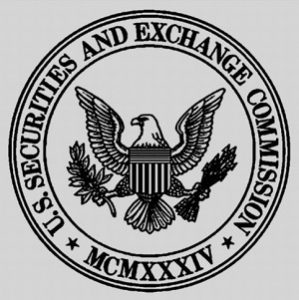 2019 has been a good year for the Securities and Exchange Commission’s Division of Enforcement SECDOE despite adverse US Supreme Court rulings, according to a new report.
2019 has been a good year for the Securities and Exchange Commission’s Division of Enforcement SECDOE despite adverse US Supreme Court rulings, according to a new report.
The SECDOE recently released its 2019 annual report and the conclusion was positive.
“We are pleased to share the Division of Enforcement’s annual report detailing the accomplishments of the Division during Fiscal Year 2019. The more than 1,350 talented women and men of the Division are steadfastly committed to protecting investors and ensuring that our capital markets operate fairly. We are extremely proud of their efforts. With today’s report, we present and assess the Division’s work, highlight some of the most significant achievements of the past fiscal year, and discuss key initiatives.
“By any measure, we believe the Division had a very successful year. In Fiscal Year 2019, the Commission brought a broad mix of enforcement actions that addressed a wide variety of misconduct across the spectrum of the securities markets. These cases combated wrongdoing by holding individuals, issuers, financial institutions, and other entities accountable, and by stripping wrongdoers of their ill-gotten gains. By removing bad actors from the markets, obtaining effective, tailored remedies, and acting quickly to stop frauds and prevent losses, the Commission’s enforcement actions sent clear and important messages to market participants, and enhanced confidence in the integrity and fairness of our markets. And in many cases, the Commission’s enforcement actions resulted in the return of funds to harmed investors.”
The report stated that its work was hindered by these US Supreme Court ruling: Kokesh VS. SEC and Lucia Vs SEC.
The website Cleary Enforcement Watch explained how Kokesh Vs SEC, decided in 2018, would impact the SEC.
“One year ago, the U.S. Supreme Court ruled in Kokesh v. SEC[1] that the U.S. Securities and Exchange Commission’s disgorgement remedy constitutes a ‘penalty,’ and is therefore subject to the five-year statute of limitations in 28 U.S.C. § 2462. As a result, the SEC can no longer seek disgorgement of ill-gotten gains older than five years.”
The Harvard Law Review noted of Lucia, “the Supreme Court held that ALJs of the Securities and Exchange Commission (SEC) were ‘Officers of the United States[]’ subject to the Appointments Clause.”
The Harvard Law Review continued, “And ALJs issue decisions that may become the final action of the SEC — making their decisions similar to those of the STJs in Freytag, but ‘with potentially more independent effect.’36. Id. So, because SEC ALJs ‘have equivalent duties and powers as STJs,’ they too are officers subject to the Appointments Clause.”
The Appointments Clause of the US Constitution requires the President to nominate, in this case a judge, which is then voted on by the Senate.
By making Administrative SEC Judges required of the appointments clause, the process of getting new judges on this court becomes more cumbersome.
That said, the Harvard Law Review downplayed the impact on the SEC, “The holding of Lucia has modest implications for the SEC, but it threatens to alter drastically the workings of other agencies, especially the Social Security Administration (SSA). The SEC employs only five ALJs, which the ‘head of department’ had already ‘retroactively’ appointed by the time the litigation reached the Supreme Court.”
The SEC stated the overall figures for their enforcement in a press release which accompanied the annual report.
“In fiscal year 2019, the SEC brought a diverse mix of 862 enforcement actions, including 526 standalone actions. These actions addressed a broad range of significant issues, including issuer disclosure/accounting violations; auditor misconduct; investment advisory issues; securities offerings; market manipulation; insider trading; and broker-dealer misconduct. Through these actions, the SEC obtained judgments and orders totaling more than $4.3 billion in disgorgement and penalties. Importantly, the SEC also returned roughly $1.2 billion to harmed investors as a result of enforcement actions.
“The actions and initiatives described in the report reflect our deliberate, principled approaches to investigations, litigation, and case resolutions,” said Steven Peikin, Co-Director of the SEC’s Enforcement Division. “We are proud of the work Enforcement staff did in enabling the SEC to punish misconduct, deter future wrongdoing, and obtain relief for harmed investors.”









